Using a dermaroller for beard growth can help stimulate hair follicles and encourage thicker, fuller facial hair over time. By creating tiny micro-injuries in the skin, it not only activates dormant follicles but also enhances the effectiveness of topical treatments.
Whether you’re looking to fill in patchy areas or support overall beard health, understanding proper technique, benefits, and precautions is key to achieving consistent, long-lasting results.
What Is a Dermaroller?
A dermaroller is a handheld device with a rotating barrel covered in hundreds of microneedles, usually between 0.25 mm and 1.5 mm long.
Designed for microneedling, it is rolled across the skin to create precise, controlled punctures. This process stimulates natural repair responses, enhances blood flow, and improves absorption of the topical beard growth solution.
Dermarollers are commonly used to stimulate scalp and beard hair growth, minimize wrinkles and fine lines, improve skin tone and texture, and reduce the appearance of acne scars or stretch marks.
How a Dermaroller Works for Beard Growth
When applied to the beard area, the dermaroller’s microneedles gently puncture the skin’s surface. This action signals the body to repair and regenerate, activating dormant follicles and encouraging thicker hair production.
It also enhances the skin’s permeability, allowing supportive topical treatments to penetrate more effectively and reach beard follicles.
Benefits of Using a Dermaroller for Beard Growth
Dermarolling offers multiple benefits for men seeking a fuller, healthier beard. By stimulating natural repair mechanisms in the skin, it creates an environment where hair follicles are better supported and topical treatments can be more effective.
Stimulates Follicles
The microneedles in a dermaroller create controlled micro-injuries that send signals to the body to repair and regenerate. This process activates dormant or underactive hair follicles in the beard area, encouraging them to shift into the growth phase.
As a result, more follicles may produce visible hair, leading to a thicker, fuller beard over time.
Improves Blood Circulation
Dermarolling increases local blood flow by creating tiny punctures in the skin. Enhanced circulation brings more oxygen, nutrients, and growth factors to the hair follicles, supporting stronger, healthier strands.
Improved microcirculation also helps remove waste products from the follicles, creating a healthier growth environment that can encourage beard density and vitality.
Stimulates Collagen and Elastin Production
Microneedling encourages the production of collagen and elastin, two structural proteins essential for healthy skin. Stronger, more resilient skin provides a stable foundation for beard follicles, which may improve the quality and anchoring of new hairs.
Increased collagen can also enhance skin elasticity, reducing irritation and creating smoother coverage as the beard fills in.
Increases the Effectiveness of Topical Treatments
Dermarollers temporarily enhance the skin’s permeability, allowing topical treatments such as minoxidil or nourishing hair growth serums to penetrate more deeply. This improved absorption helps active ingredients reach the follicles where they are most effective.
For men already using minoxidil for beard growth, dermarolling can significantly boost the overall impact of their beard care regimen.
Reduces Patchy Growth
Many men struggle with uneven or patchy beard growth due to inactive follicles. By stimulating follicle activity and circulation, dermarolling can encourage growth in sparse areas.
Over time, this leads to more uniform coverage, blending patches into the surrounding beard and helping men achieve a fuller, more consistent appearance.
Convenient and Affordable
Compared with professional in-office microneedling treatments, a dermaroller is a cost-effective and accessible option. Once purchased, it can be used repeatedly at home with proper care and hygiene.
For men seeking beard improvement, it serves as an affordable, noninvasive tool that integrates easily into a grooming routine without requiring extensive downtime.
What To Look for in a Dermaroller for Beard Growth
Not all dermarollers are made with the same quality, and choosing the right one is essential for safety and effectiveness. Paying attention to specific features can help you maximize results while reducing the risk of irritation or infection.
High-Quality Design and Materials
Choose a dermaroller made from medical-grade stainless steel or titanium microneedles. These materials resist dulling, bending, and breaking, ensuring precise punctures and minimizing skin trauma.
A well-constructed handle provides control and comfort, making it easier to maintain consistent pressure and technique while dermarolling sensitive facial skin areas.
Needle Length
For beard growth, a needle length ranging from 0.25 to 0.5 mm is generally recommended. This depth reaches the upper dermis where follicles are located, stimulating activity without causing excessive discomfort.
Shorter needles (0.25 mm) effectively enhance topical absorption, while longer ones increase irritation risk and are better suited for professional use.
Easy To Clean
Hygiene is critical when using a dermaroller on facial skin. Opt for a model that can be disinfected thoroughly with isopropyl alcohol without damage.
Avoid rollers with poorly fitted components, as these can trap debris and bacteria. A smooth, durable design makes regular cleaning simpler, lowering infection risk significantly.
Storage Case
A protective storage case helps keep your dermaroller clean between uses and prevents the microneedles from being damaged. Cases reduce contamination risk from dust, surfaces, or accidental handling.
How to Use a Dermaroller for Beard: Step by Step
Using a dermaroller correctly is essential to get the best results while avoiding unnecessary irritation or injury. Following each step carefully ensures your skin stays healthy, your roller remains clean, and your beard follicles receive the maximum benefit from the treatment.
1. Shave or Trim Beard
Start with a clean, even surface by shaving or trimming your beard. This allows the microneedles to directly contact the skin without interference from long hairs.
Rolling over longer hairs may tug or pull, causing discomfort and reducing the roller’s ability to stimulate the underlying follicles.
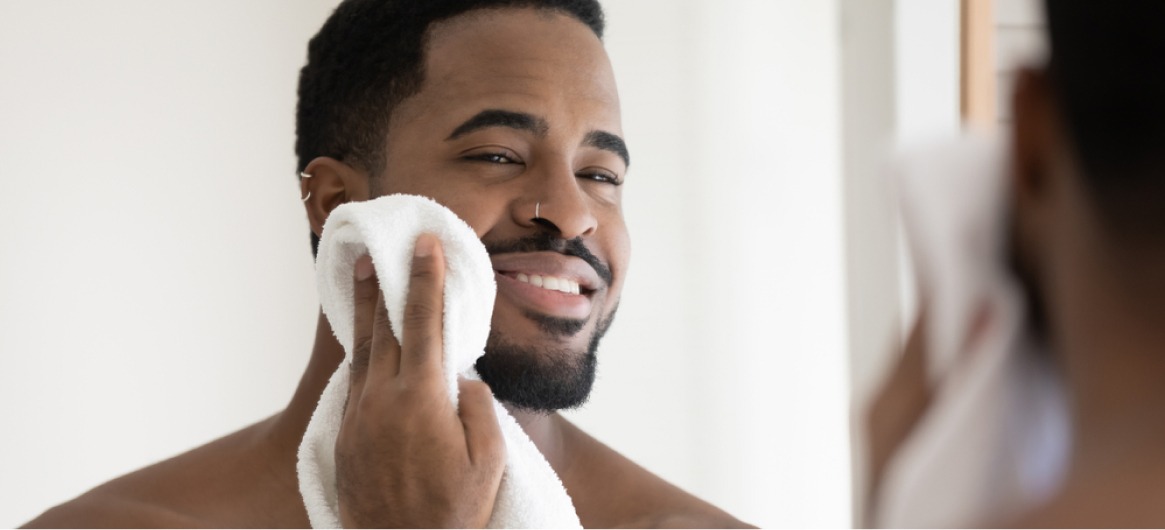
2. Cleanse Face and Pat Dry
Wash your face with a gentle cleanser to remove oil, dirt, and bacteria. This prevents debris from entering microchannels created by the needles. After cleansing, pat your face dry with a clean towel—never rub, as this can irritate the skin and increase sensitivity before rolling.
3. Disinfect the Dermaroller
Before each use, soak the roller’s head in 70% isopropyl alcohol for at least 5–10 minutes. This step eliminates bacteria that could enter the skin during treatment.
Allow the roller to air dry on a clean surface before starting, avoiding contact with contaminated surfaces to maintain proper hygiene.
4. Roll in All Directions Without Overlapping Using Light Pressure
Gently roll the device across your beard area vertically, horizontally, and diagonally, ensuring even coverage. Avoid overlapping passes, which can irritate the skin or cause tiny scratches.
Use light pressure, just enough for the needles to make contact, since pressing too hard increases the risk of redness, pain, or skin damage without improving results. A balanced, methodical approach ensures maximum stimulation with minimal irritation.
5. Apply Topical Treatment if Using
If applying treatments such as minoxidil, nourishing serums, or beard oils, do so immediately after rolling. Microchannels created by the needles enhance absorption, allowing active ingredients to penetrate more effectively.
Always choose gentle, dermatologist-approved products to avoid irritation, as the skin will be more sensitive after treatment.
6. Disinfect the Dermaroller
After rolling, disinfect the roller again by soaking it in isopropyl alcohol for 5–10 minutes. This prevents bacterial buildup and keeps the device safe for the next use.
Allow it to air dry completely before storing it in a protective case to maintain hygiene and prolong the roller’s lifespan.
How Often to Use Dermaroller for Beard
Most men benefit from using a dermaroller once or twice per week, allowing the skin time to heal between sessions.
Rolling too frequently can damage the skin barrier, cause irritation, or increase infection risk, while consistent, moderate use supports steady follicle stimulation.
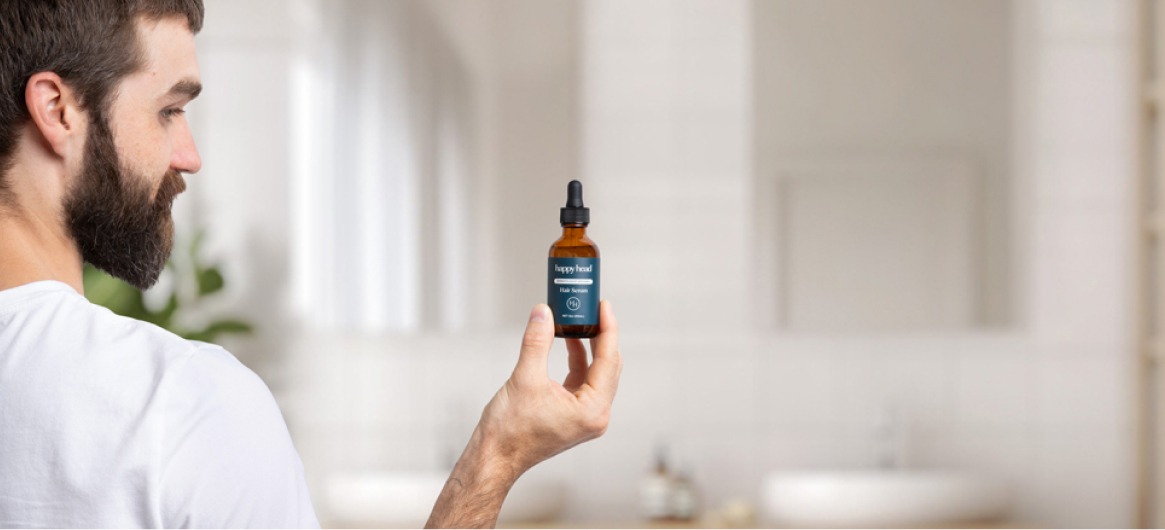
Pairing Minoxidil With Dermaroller
Minoxidil works by widening blood vessels, improving follicle oxygen and nutrient delivery, and extending the hair growth phase. When paired with dermarolling, absorption of topical minoxidil for beard increases as microchannels allow deeper penetration.
This combination can boost follicle stimulation and enhance beard density, particularly in men with patchy growth. However, only dermatologist-approved formulations should be used, as the skin is more sensitive post-treatment.
Possible Side Effects When Dermarolling
While generally safe when used correctly, dermarolling can cause temporary side effects such as redness, sensitivity, mild swelling, or pinpoint bleeding.
If the roller is not disinfected properly, there is a risk of infection. Overuse or pressing too hard may also lead to skin irritation or damage.
Who Should Avoid Dermarolling for Beard Growth
Men with active acne, eczema, psoriasis, or open wounds in the beard area should avoid dermarolling. It’s also unsuitable for individuals with clotting disorders, compromised immune systems, or those prone to keloid scarring, as microneedling can worsen these conditions.
Managing Sensitivity and Redness
Mild redness and sensitivity are common after dermarolling and usually resolve within 24–48 hours. To ease discomfort, apply a cool compress or a gentle, fragrance-free moisturizer.
Avoid sun exposure, harsh cleansers, and exfoliants immediately after treatment. If irritation persists or worsens, discontinue use and consult a dermatologist for guidance before resuming.
Common Mistakes To Avoid
A common error is using needles that are too long, which can cause unnecessary pain and skin trauma. Daily rolling prevents proper recovery, increasing irritation and redness.
Pressing too hard, rolling over multiple areas at once, or skipping disinfection can lead to infection or follicle damage. Additionally, applying harsh topical products immediately afterward can worsen sensitivity.
Following proper technique, timing, and hygiene is essential to achieve safe, effective beard growth.
Tracking Your Beard Growth Progress
Monitoring progress helps you stay consistent and realistic with dermarolling. Take clear photos every 2–4 weeks under the same lighting to notice subtle changes in thickness or coverage.
Keeping a simple journal of your routine, including rolling frequency and products used, allows you to track patterns and make adjustments. Progress is often gradual, so patience and consistency are key.
Cleaning and Caring for Your dermaroller
Proper cleaning and storage of your dermaroller are critical to prevent bacteria buildup and extend its lifespan.
After each use, soak the roller head in 70% isopropyl alcohol for 5–10 minutes, then allow it to air dry on a clean surface. Always store it in a protective case to avoid contamination and needle damage.
Replacing the dermaroller Head
Even with regular cleaning, microneedles dull over time, reducing effectiveness and increasing the risk of skin irritation. Most roller heads should be replaced every 3–6 months, depending on frequency of use.
Replace sooner if you notice bent, broken, or worn needles to maintain safe, consistent performance and protect your skin’s health.
When To Consult a Dermatologist
Consult a dermatologist before starting dermarolling if you have sensitive skin, active acne, eczema, or other skin conditions.
Seek professional guidance if you experience persistent redness, swelling, or irritation after rolling or if you are unsure about needle length, technique, or combining treatments such as minoxidil for safe and effective beard growth.
Dermaroller for Beard: The Bottom Line
A dermaroller can be a safe, effective, and affordable tool for men looking to enhance beard density and reduce patchiness when used correctly. By combining proper technique, hygiene, and consistency, you can maximize follicle stimulation and support topical treatments.
While results take time, a careful, informed approach ensures optimal outcomes. For those seeking a fuller, healthier beard, a dermaroller for beard growth can be an invaluable addition to their routine.
Talk to a board-certified dermatologist to discuss your goals and find the solution that is best for you.
Frequently Asked Questions
Do dermarollers really work for beard growth?
Dermarollers can encourage beard growth by creating tiny micro-injuries in the skin, which stimulate healing, increase blood flow, and activate hair follicles. They may also improve absorption of topical treatments, but results vary depending on genetics and treatment consistency.
How often should I use a dermaroller for my beard?
Dermarolling should typically be done once or twice per week, depending on needle length and skin sensitivity. This allows the skin time to recover and minimizes irritation. Using it too often can damage the skin barrier, cause redness, or increase the risk of infection.
How long does dermarolling take to grow a beard?
Beard growth results from dermarolling are gradual and often require consistent use over several months. Most men begin noticing improvements in thickness or reduced patchiness after 8–12 weeks, though genetics, age, and the use of supportive treatments play a significant role.
Should I use beard oil after dermaroller?
Yes, applying beard oil after dermarolling can help soothe the skin, reduce dryness, and support follicle health. Because microneedling temporarily enhances absorption, choose a gentle, high-quality oil without harsh fragrances or irritants to avoid unnecessary irritation.



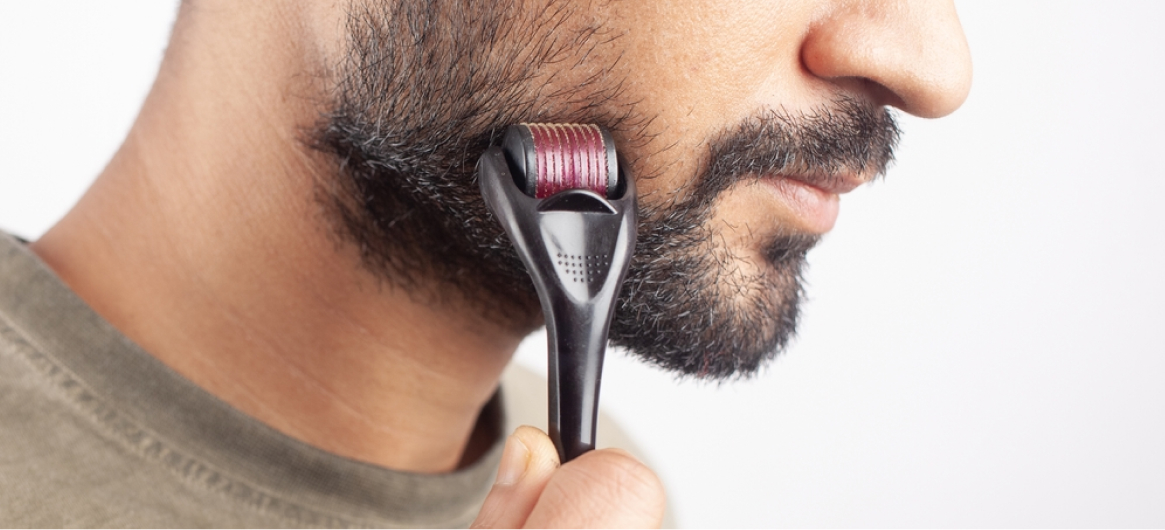



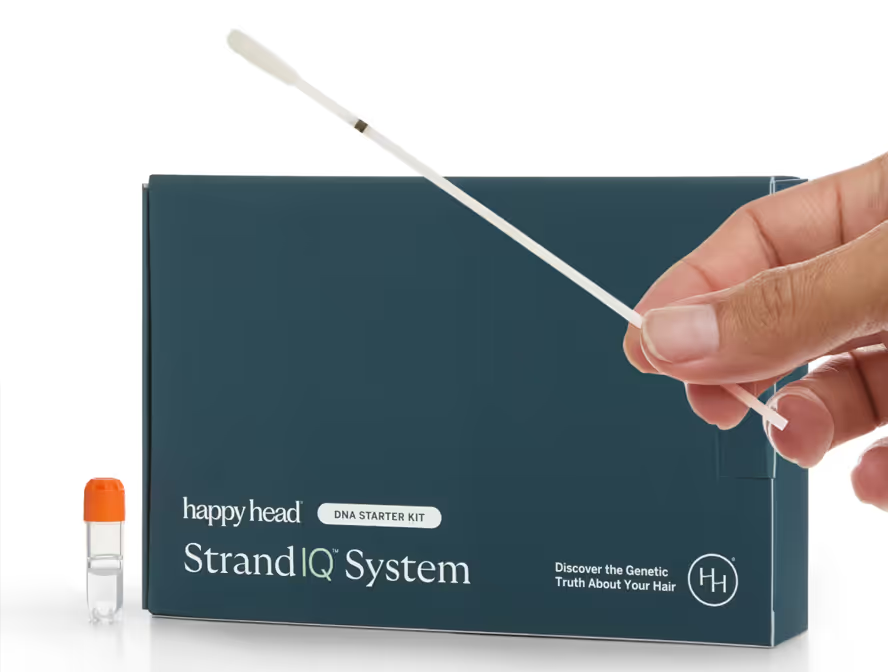

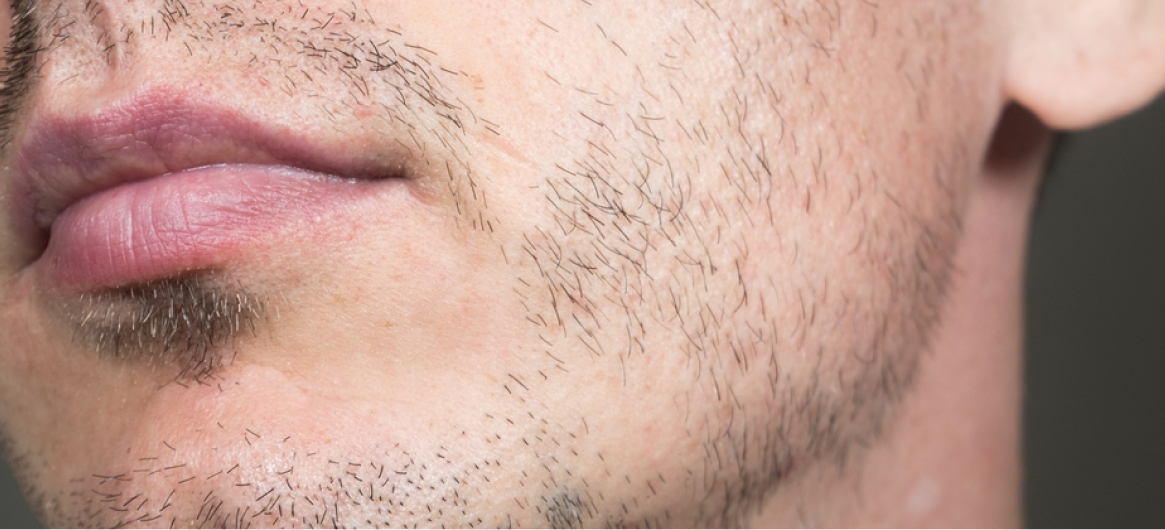
.avif)